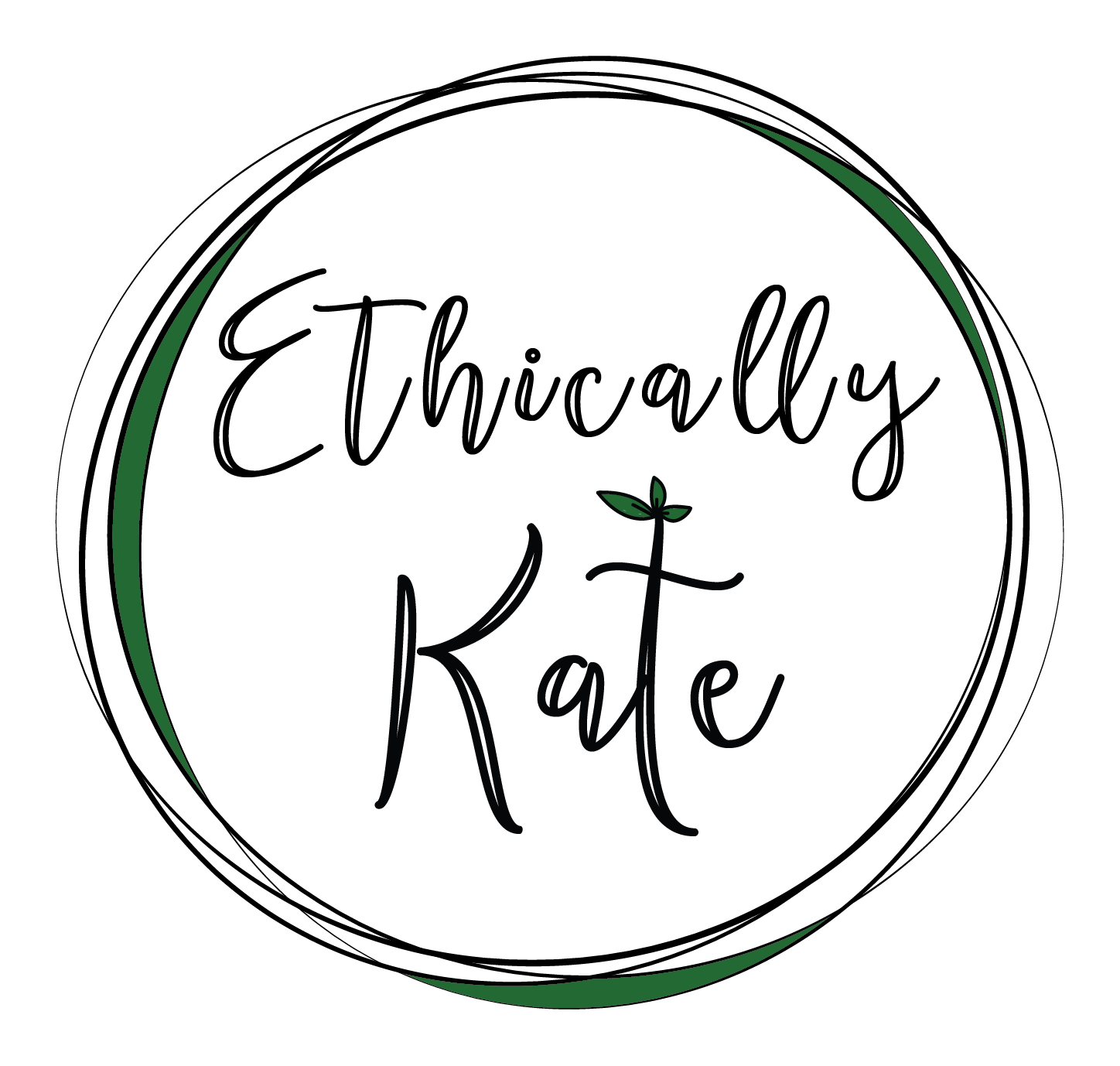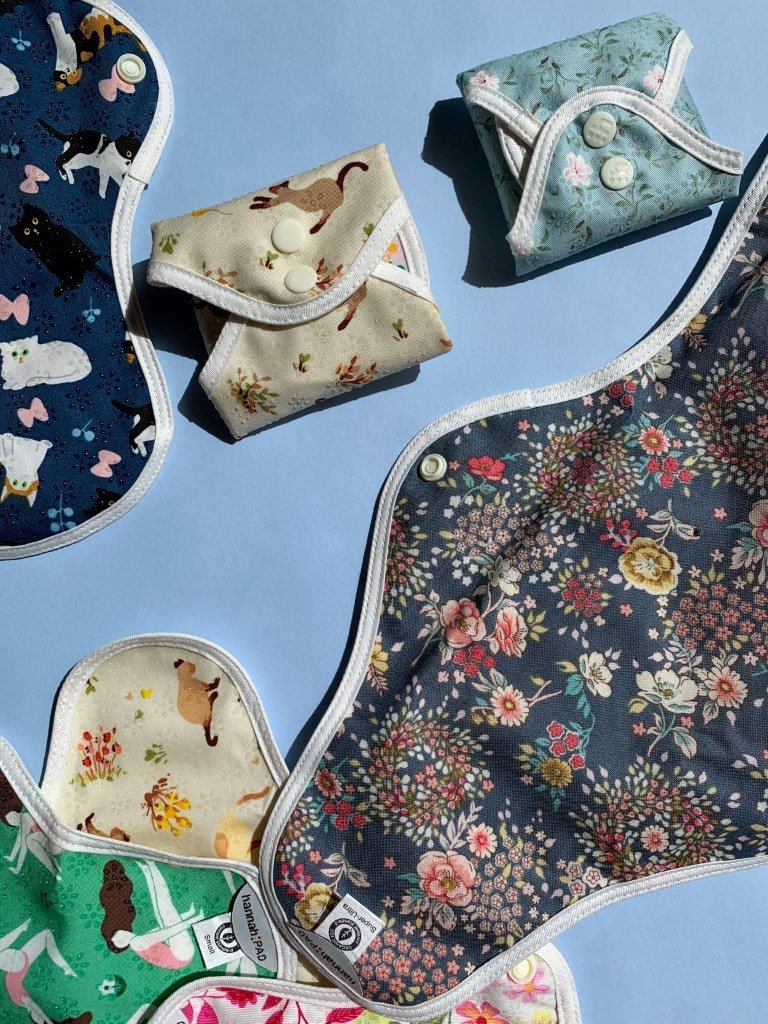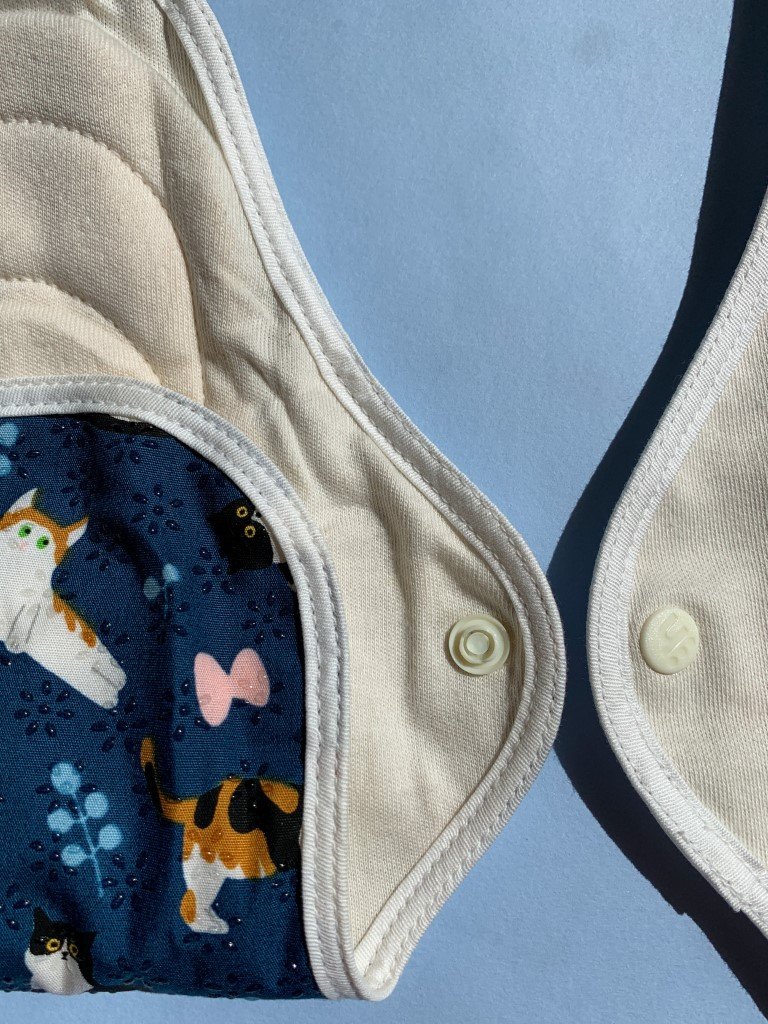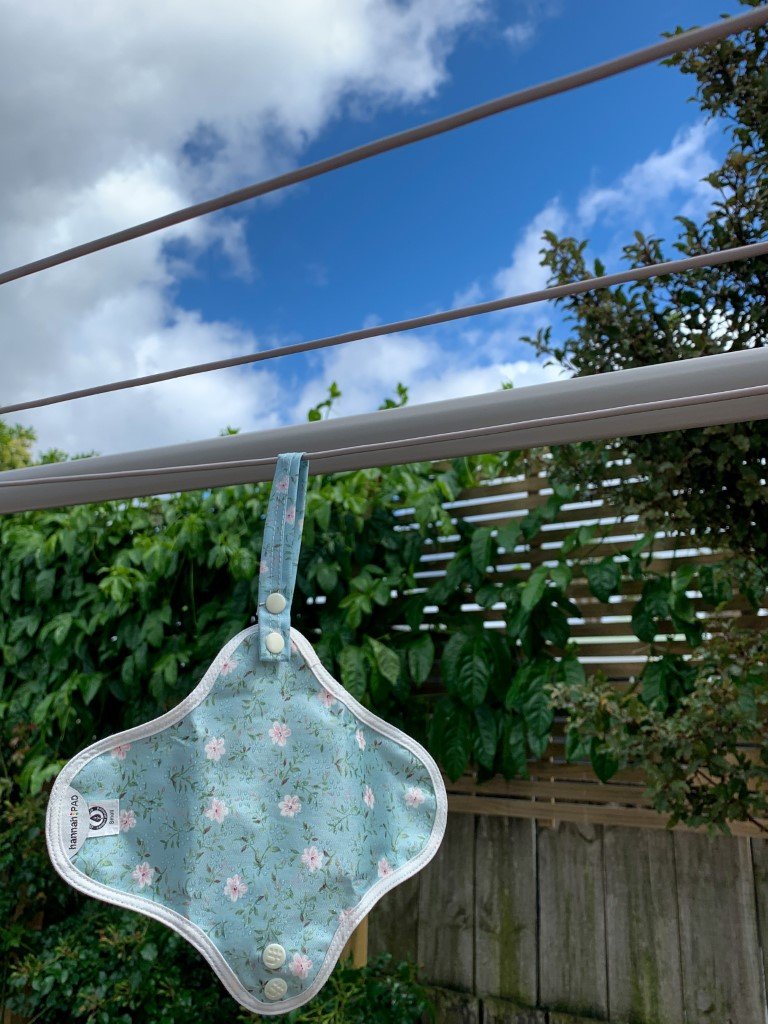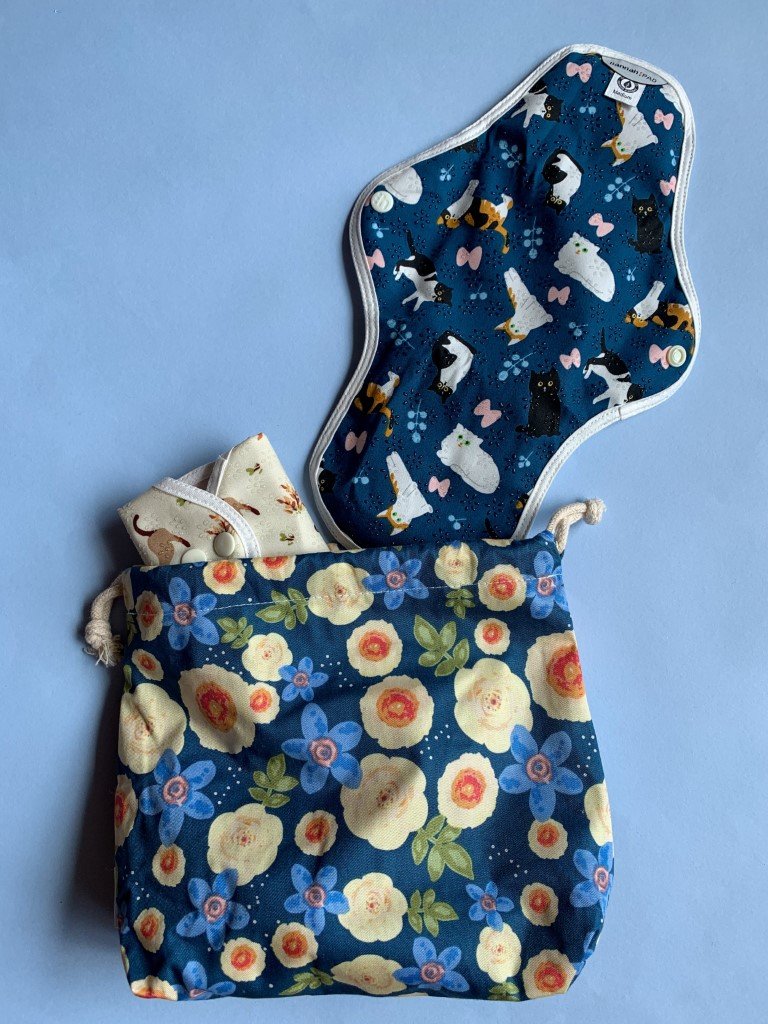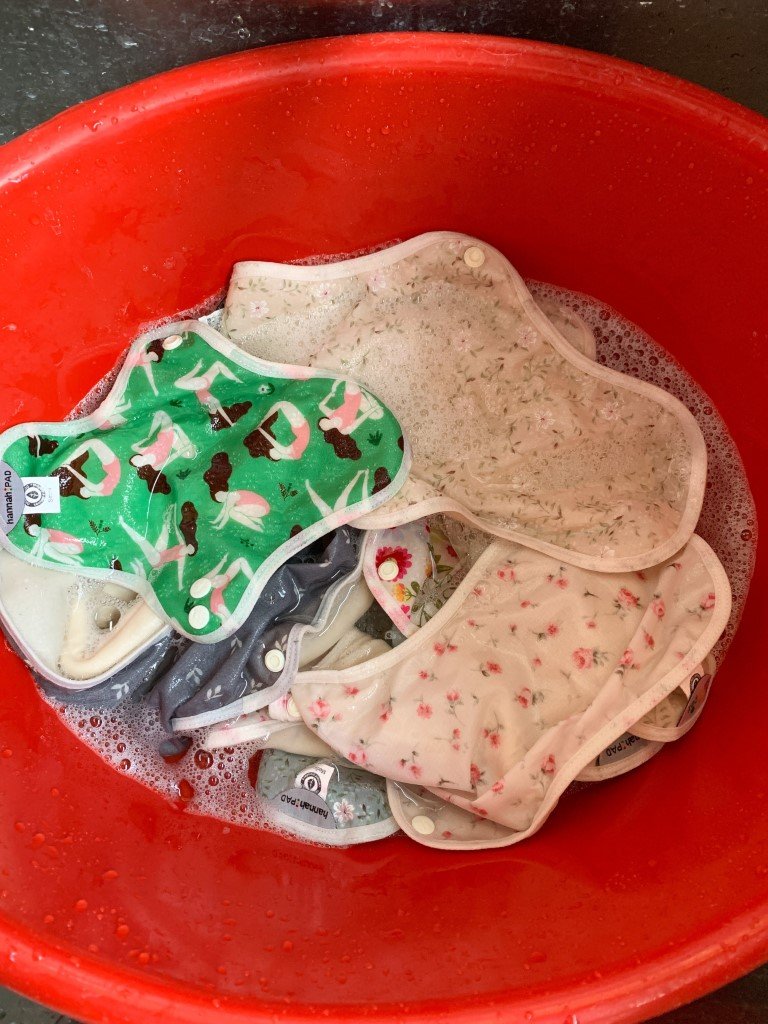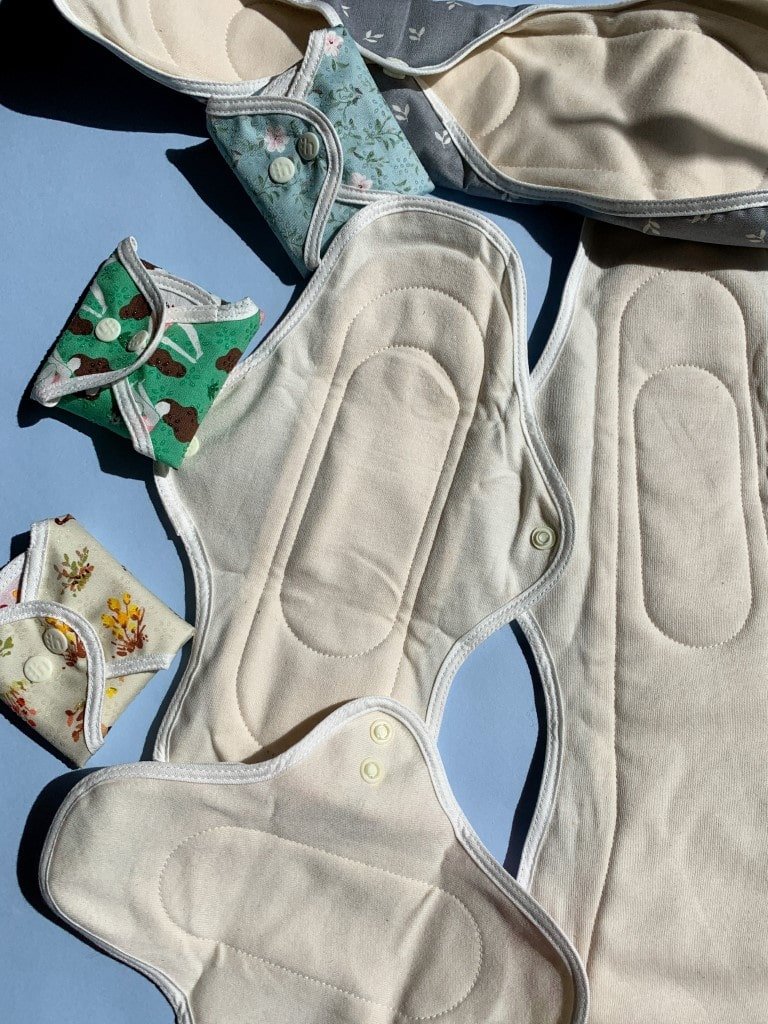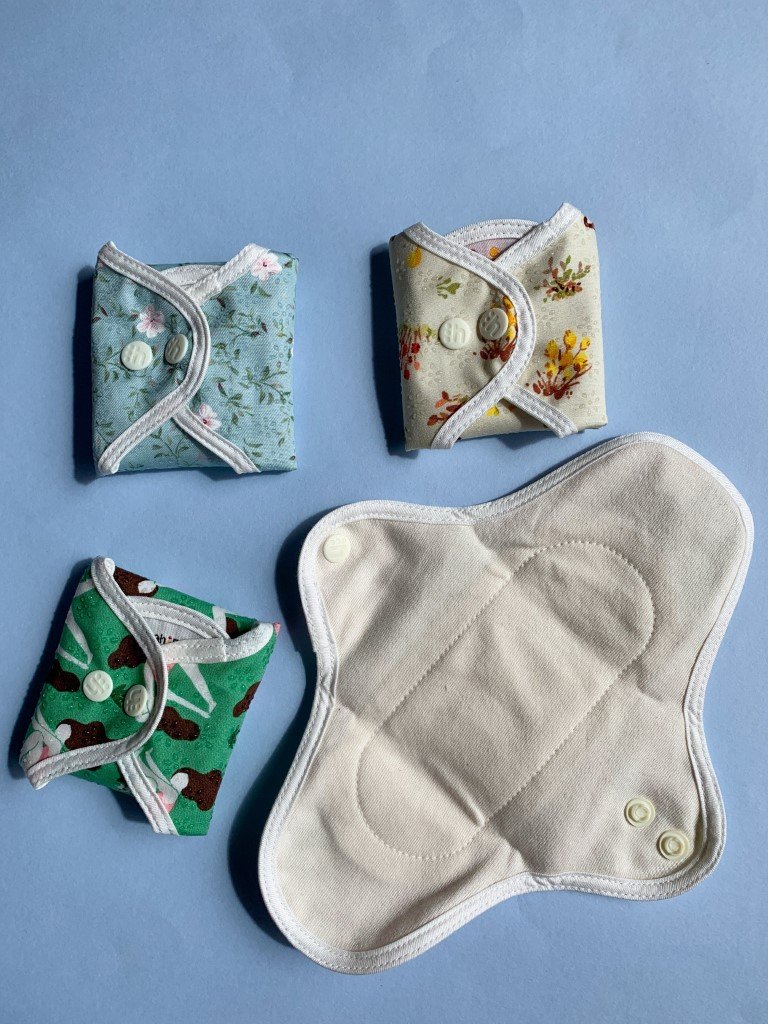Managing Your Sustainable Period With hannahPAD
Every year, the world uses (and throws away) 45 billion disposable pads and tampons. Disposable period products are costly, can negatively impact a person’s health, and are getting into our landfills, waterways, and marine ecosystems. That’s why I started using reusable period products in March 2017.
I purchased my first hannahPADs on the 27th of March 2017 - I still have the e-receipt! Starting with liners to help me phase into using a menstrual cup, these liners are still in use and haven’t yet showed signs of deterioration. That’s why it’s an absolute privilege to work with hannahPAD to share more about their products and why I continue to use them. This blog will cover:
How to use and wash reusable pads
Brief description of menstrual cups
My review/tips for using reusable pads (I’ve used solely pads for my past few cycles so I can share this blog with experience and honesty)
Frequently asked questions for those nervous to try them
What is a reusable pad?
Just like a disposable pad, a reusable pad is designed to catch and absorb menstrual flow during a period (or fluids during other situations, like pregnancy or incontinence). hannahPAD is made from certified organic cotton that is unbleached, non-dyed, and toxin-free. Basically, it’s 100% safe to put against your skin. hannahPADs are dermatologically tested so they’re okay for the most sensitive skin types too!
The beige organic cotton sits against your skin, and the beautiful patterned side sits against your underwear. To wear, simply place the pad on the gusset of your undies, fold the wings around the sides and snap to fasten.
There are SO many different kinds of pads offered by hannahPAD that suit the different phases of a cycle:
Small — 21cm length*
Medium - 27cm length
Large (overnight) - 33cm length
Ultra - 36cm length
Super Ultra - 42cm length
*length = front to back.
You’ll see in the images, there are silicon grips dotted over the patterned fabric so the pad does not slip. These are a recent addition and I LOVE them (I had issues with the pads slipping back in 2017). The grips are only on the smaller sizes as the larger sizes stay in place.
The domes are easy to fasten and snap open, and there are two domes to give you options depending on the size of your underwear.
To be clear, the beautiful pattern side goes against your underwear and the beige cotton side faces up to touch the skin.
How to wash your hannahPADs
During my period, I have a bucket full of cold water in my laundry sink to soak my used pads. When it’s time to change a pad, I rinse the dirty pad under cold water and then lather it up with a laundry soap bar. Then I place the pad in my bucket of cold water with the others. I change the water in the bucket every day, and throw the pads in the wash when I put a load on (only after they’ve soaked for about 6 hours).
hannahPADs should NEVER be tumble dried, dry cleaned or bleached. I dry my pads on the washing line in the sunshine.
A few tools to help with washing:
Wet bag - pop your hannahPADs in here when you’re out and about. There is a waterproof lining, and compartments so you can keep clean and dirty pads separate.
Drying strap - you can peg your hannahPADs on the line, or use a drying strap to save space. The drying strap is especially handy for frequent travel.
Probiotic laundry soap - brilliant for cleaning your hannahPADs.
Jumping away from pads for a moment, hannah also offer menstrual cups - the hannahCUP. I haven’t personally used one as I have a cup already and don’t want to waste a cup that someone else could use, but they’re super similar to what I have and I’ve heard great things!
What is a period/menstrual cup?
A menstrual cup collects your menstrual blood instead of absorbing it. It’s inserted using different folding techniques. You can monitor your flow with the capacity indicators, and remove the cup easily by locating the cup stem (never pull the stem!) and using the grips to pinch and pull.
Kate’s Pad Tips
The sooner you wash them, the better. Even if the pad isn’t completely full and I have only had spotting for a few hours, I still change it. Blood comes out easier when it hasn’t had a chance to set in.
Don’t be embarrassed: I used to be fearful that my flatmates or neighbours would see my reusable pads hanging on my washing line. This disincentivized me to use them. Then I realised a) they aren’t actually looking b) it’s a normal process and they probably use them too!
Have more pads then you need. Consuming more is not usually my message, but in this case, it’s important. If, like me, you only put a load of washing on once a week, you need to ensure you have enough pads to last a whole period without relying on washing and drying them in time. Washing doesn’t dry quickly in winter, and you don’t want to be caught out! To avoid having to head to the supermarket to buy horrid plastic pads again, get a few extra - these will be helpful to keep in your handbag for emergencies too.
Thick cotton underwear with a strong elastic waistband is ideal to pair with your pads. Some of my loose underwear that are old or less fitting, don’t hold the pads in place well enough for me to trust that everything will be caught.
Start small. Learn from me and start with just a few liners first. Incorporate them into your period routine and see what you think! They may not work for you, and that’s okay. Doing this means you don’t waste the pads or your money, plus you aren’t overwhelmed with a totally new system all at once.
My cycle is usually 4 days. Heavy for 2, medium for one, and light for 1. Ideal hannahPAD collection: x8 medium, x1 large, x1 ultra, x2 small, x4 liners
Use this handy guide to help determine how many pads you need.
Frequently asked questions
Do they leak?
If you have the right underwear on, chose a suitable hannahPAD type for absorbency, and have secured the dome, they won’t leak.
Do they smell?
Unlike scratchy, stuffy, plastic pads, the hannahPAD is breathable. If you leave your hannahPAD without changing it for too long, of course it will smell. However, if you change it when needed, or at least every 3-4 hours, it will not smell.
Are they more expensive?
They may be more expensive upfront (because you’re buying a carefully designed organic product), but in the long run they are more cost effective. For example, the hannahPADs in my ideal period kit listed above cost $375.35. If I used disposables, I would be spending around $240 a year. As customers have used their hannahPADs for up to 8 years, let’s compare the cost with an 8 year time frame in mind.
Disposable pads: $1,920 over 8 years.
HannahPADs: $375.35 over 8 years.
Cost Savings: $1,544.65. Environmental savings: 1,536 plastic pads removed from landfill.
Even if you factor in the cost of a wet bag and soap for 8 years, that’s still more cost effective. Add in the environmental benefits, less hassle remembering to purchase period products every month, and the benefits for your health (no plastic rubbing against your skin)… you’ve got a great thing.
How do you dispose of them when they’re no longer usable?
There’s an epic blog post here describing exactly how to do that. hannahPADs can last 2-5 years or longer depending on personal use and care so when the time comes to retire them, it’s important to know how to responsibly dispose of them. The organic cotton layers can be composted, the domes can be cut out and reused, and the outer layer and tags go in the bin.
Who makes them?
hannah brand is Australian owned. hannahCUP is made in South Korea and the hannahPAD and accessories are made in Vietnam. Through things like their GOTS certification on the cotton, hannah ensure the people who make their products are treated fairly in the workplace.
Reusable pads aren’t for everyone, but they’re growing in popularity and after properly putting them to the test, I can see why! They’re highly recommended by friends who can no longer use a cup after pregnancies, people with incontinence, and all sorts of other conditions that mean having the extra safety net enables quality of life.
Shop for your own Hannahpads here!
Use code ETHICALLYKATE for 15% off all pads and menstrual cups.
As a rule, I only work with brands I love, use, and can whole heartedly back. This is a sponsored blog (I can't pay my electricity bill with free products), but 100% my own words, photos, and opinion.
